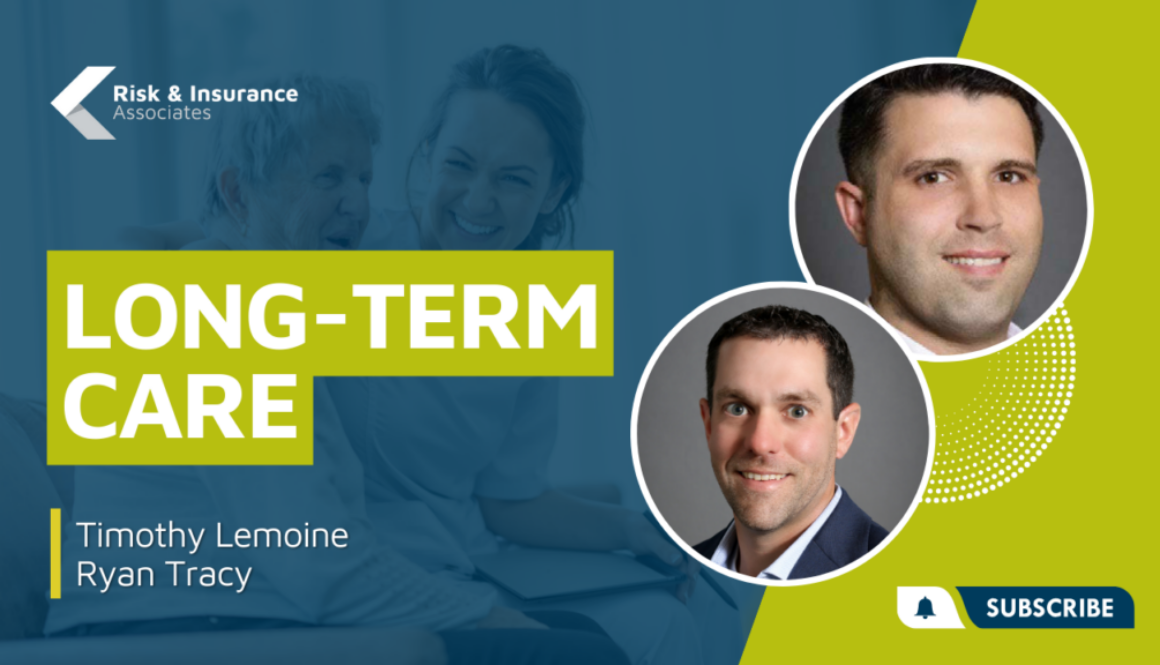
All Posts


7 Tips for Choosing a Life Insurance Provider

There’s no greater motivation for putting a protection plan in place than for those you love. Among the decisions you need to make when buying life insurance is what company to choose. Here are some tips to help you find the right insurance company for you, your family, and your situation.
Price matters, but it’s not the most important factor
Often, a straight price comparison can cause you to overlook the underlying features of a policy, such as cash value guarantees and return of premium features, that can be of real value over time.
Price quotes may change, so get several of them
Initial price quotes often change after your personal and health information has been assessed. Make sure you get multiple price quotes, so you have choices should some of the final price quotes come back much higher than expected.
Find companies that are financially strong
You want to work with a company that will be around when it’s time to pay the death benefit on the policy. There are a number of independent rating firms, such as Fitch Ratings, Moody’s, A.M. Best Company, and Standard & Poor’s, that issue grades for insurance companies. Additionally, life insurance companies will generally post their ratings on their website. Each rating firm has a different scale, but generally you want to look for a rating in the A range.
Evaluate each company’s menu of offerings
Although many companies sell similar polices, some focus on certain products (i.e. whole life), certain market segments (i.e. seniors, young professionals), or specific careers (i.e. medical professionals).
Look at customer satisfaction scores
You want to work with a company that is going to provide good service and support. One way to gauge an insurer’s reputation is through complaints filed with state regulators. You can access them on the National Association of Insurance Commissioners website. The National Association of Insurance Commissioners is an industry association dedicated to protecting consumers and ensuring fair, competitive, and healthy insurance markets.
Consider using a mutual company
Unlike publicly traded insurance companies which are owned by stockholders, mutual life insurance companies exist to serve the insurance needs of their policyholders who may share in the profits in the form of policy dividends.
Leverage life insurance experts
There are many financial advisors who specialize in life insurance. They have not only an in-depth knowledge of all the various policies available but also access to a wide range of carriers, and they can do the work of matching you with the company and policy that best suits your needs.
We hope you find this list helpful and consider using it as a catalyst to either purchasing life insurance for the first time or reevaluating the coverage you currently have to ensure it still meets your protection needs.
We leave you with a few words of wisdom from LIAM Spokeswoman Kelly Rowland: “Having life insurance truly eases my heart and mind. It means that no matter what, my family can keep looking toward the future.”

Funding a Buy-Sell Agreement with Life Insurance

As a partner or co-owner (private shareholder) of a business, you’ve spent years building a valuable financial interest in your company. You may have considered setting up a buy-sell agreement to ensure your surviving family a smooth sale of your business interest and are looking into funding methods.
One of the first methods you should consider is life insurance. The life insurance that funds your buy-sell agreement will create a sum of money at your death that will be used to pay your family or your estate the full value of your ownership interest.
How funding with life insurance works with Key Employee Insurance
When using life insurance with a buy-sell agreement, either the company or the individual co-owners buy life insurance policies on the lives of each co-owner (but not on themselves). If you were to die, the policyowners (the company or co-owners) receive the death benefits from the policies on your life.
That money is paid to your surviving family members as payment for your interest in the business. If all goes well, your family gets a sum of cash they can use to help sustain them after your death, and the company has ensured its continuity.
You’ve got a great group working for you now, and business is good. Would your business survive losing a key employee?
Advantages of using life insurance
- Life insurance creates a lump sum of cash to fund the buy-sell agreement at death
- Life insurance proceeds are usually paid quickly after your death, ensuring that the buy-sell transaction can be settled quickly
- Life insurance proceeds are generally income tax free; a C corporation may be subject to the alternative minimum tax (AMT)
- If sufficient cash values have built up within the policies, the funds can be accessed to purchase your business interest following your retirement or disability
Disadvantages of using life insurance
- Life insurance premiums are paid with after-tax dollars because the premiums are generally not a tax-deductible expense
- Premium requirements are an ongoing expense
- One or more co-owners may be uninsurable due to age or illness
- If the co-owners’ ages vary widely, younger co-owners will have to pay higher premiums on the lives of the older co-owners
- If the ownership percentages vary widely, more insurance will be needed to cover the owners with the larger ownership interests, resulting in higher premium costs for those with smaller ownership interests
How to set up different types of buy-sell agreements
In an entity purchase buy-sell agreement, the business itself buys separate life insurance policies on the lives of each of the co-owners. The business usually pays the annual premiums and is the owner and beneficiary of the policies.
In a cross-purchase buy-sell agreement, each co-owner buys a life insurance policy on each of the other co-owners. Each co-owner usually pays the annual premiums on the policies they own and are the beneficiaries of the policies. If your company has a large number of co-owners, multiple policies must be purchased by each co-owner.
A wait and see (or hybrid) buy-sell agreement allows you to combine features from both the entity purchase and cross purchase models. The business can buy policies on each co-owner, the individual co-owners can buy policies on each other, or a mixture of both methods can be used.
The buy-sell agreement should be fully funded
The amount of insurance coverage on your life should equal the value of your ownership interest, so there will be enough cash from the policy proceeds to pay your family or estate in full for your share of the business after your passing. But if all that is affordable is insurance coverage for a portion of your interest, you might want to go ahead and fund that amount. The company may be able to increase the amount of insurance or use additional funding methods and the agreement should specify how your family or estate will be paid.
The value of the business could change over time
What if the insurance proceeds turn out to be less than the value of your business interest because of growth in the business? Your surviving family members might end up getting less than full value for your business interest. Your buy-sell agreement should specify how the valuation difference will be handled.
Conversely, the insurance proceeds might be greater than the value of your business interest when you’ve passed. Your buy-sell agreement should address this potential situation upfront and specify whether the excess funds will belong to the business, the surviving co-owners, or your family or estate.
Should group life insurance be used?
Using a company’s group life insurance plan to fund a buy-sell agreement is generally not recommended. Normally, group life insurance premiums are tax deductible to the company. But premiums are no longer deductible if the business is the beneficiary.
Potential negative tax consequences
- Life insurance amounts are generally tax-free so long as appropriate procedures regarding notice and consent to the insured employee are followed.
- Assume your business is a corporation or is taxed as one. When one of your co-owners dies, their estate becomes the owner of the insurance policies covering you and the other co-owners of the business in a cross-purchase agreement. If these policies are then transferred to the surviving co-owners to pay for future buyouts, a transfer-for-value (gain) may occur, and a portion of the proceeds received from the transferred policies may be taxable.
- If a policy is canceled (surrendered) for cash to buy out your interest while you’re living, any gain on the policy is subject to federal income tax for the policyowner. Gain includes all policy loans outstanding at the time of surrender. Also, the policy may carry surrender charges.
- The proceeds received by a C corporation under an entity purchase agreement may be subject to the AMT.
Keeping track of your buy-sell agreement
Each year, the premiums on the policies must be paid, or the insurance will lapse. So monitor premium payments carefully. Your buy-sell agreement should include a feature requiring ongoing proof of payment. Also, review the amount of insurance regularly.
The insurance coverage may have to be increased periodically to reflect increases in the value of the business. If additional insurance is not possible, another funding method should be established. Finally, periodically check the financial rating of your insurance company. The policies funding your buy-sell agreement will do your family no good if the insurer becomes insolvent.

Keeping Your Auto and Home Insurance Low

As a responsible adult, you know that you need to have auto and home insurance. But that doesn’t mean you have to break the bank to get it. In fact, you have many options to keep your rates low.
On average, most homeowners pay over $1,300 a year on insurance. That can be a hefty financial burden, but it doesn’t have to be. Here are some steps you can take to keep your auto and home insurance low:
Consider One Insurer
You can often save money by choosing one insurer for your auto and home insurance. Most insurers offer discounts for having multiple policies with them. You’ll also only need to work with one company for both policies when the time comes to make a claim. Loyalty to one company can also prove profitable. Some insurance companies also reduce the rate for customers who have been with them for a long time.
Increase Your Deductibles
Raising your deductibles is a great way to lower your premiums. A higher deductible means you’ll pay more when you make a claim, but it also means that your monthly premium will be cheaper. This, of course, is a judgement call that you need to evaluate and investigate. Make sure you choose an amount you can afford in the event of an accident or other incident.
Don’t Forget to Account for Home Improvement
Some improvements can reduce the risk of damage and help you save money on your insurance through discounts. This includes deadbolt locks, storm shutters, smoke alarms, and fire extinguishers. Inform your insurer about any improvements you make so that they can adjust your policy accordingly. In fact, it’s always a good idea to foster and maintain a regular dialogue with your insurer.
Take Advantage of All the Discounts
Insurance companies offer a variety of discounts for different things. These can include good driver discounts, multi-policy discounts (Having multiple policies with one company), student or military discounts, and more.
Another source of discounts may come from affinity programs. These may be offered through certain employers, professional organizations, and universities. Ask your insurance provider if you qualify for any of these types of available discounts.
Compare Different Providers
Comparing different providers when shopping for auto and home insurance is a good idea. Some companies may offer lower rates for the same coverage, so it’s worth looking around. You can use an online comparison tool or speak to an independent insurance agent who can help you find the best deal.
Although bundling multiple policies with one company is often the most cost-effective option, it doesn’t always mean it’s the best choice for your situation. Cheaper isn’t always better.
Conclusion
By following these steps, you can keep your auto and home insurance costs low while still getting the coverage you need. Check with your insurance provider to ensure you get the best deal possible. With a little effort, you can save money on your insurance premiums without sacrificing the quality of your coverage.

From Premiums to Paychecks: Unlock the Hidden ATM in Your Life Insurance

Obtaining life insurance is a benchmark for many adults when building their portfolio. Earning income is one thing but protecting it for your loved ones upon your death is quite another. The primary objective of life insurance is providing financial support after you’ve passed. There are other benefits to permanent life insurance that you may enjoy now.
Most permanent life insurance policies can build cash value over time. Then a portion of your premium is allocated to investments in some capacity. They are a financial asset because of this ability. When calculating your net worth, the cash value is marked as an asset. Similar to IRAs and mutual funds, a permanent life insurance policy provides you with options to help build a diversified and holistic wealth management portfolio.
There are several types of asset-building permanent life insurance policies to look at:
Whole life insurance
Whole life is the only permanent insurance with a guaranteed cash component, typically growing between 2% and 3.75% depending on the product. “Participating” policies are also eligible to share in the profits with the company in the form of non-guaranteed dividends. As the cash value grows over time, you can borrow that money via policy loan or cash withdrawal. Remember, if you don’t pay back your loans, it may impact your beneficiaries’ payout.
Universal and variable universal life insurance
Although these policies do not have a guaranteed cash component, you’re still able to borrow against or withdraw any cash value that has accumulated in the policy. A major benefit to universal life is a much more flexible premium when compared to whole life. Universal life policies can grow via a fixed interest rate set by the insurance company or can be tied to an indexed performance (think S&P 500) with caps and floors. Variable universal life is the only insurance policy where you can choose your investments, usually with the help of your advisor.
Hybrid life/asset-based long-term care insurance
If a policyholder never uses their traditional long-term care insurance, often those funds disappear upon the policyholder’s passing. There is no recovery of the premium. A hybrid life insurance policy provides a balance of coverage for long-term care, and if not used, the funds are provided through the death benefit. Most policies reduce the death benefit “dollar for dollar”, when being used for shorter long-term care events.
Why Build Cash Value?
There are multiple reasons to use your life insurance policy as an asset. It could become an additional source of income for retirement. The cash value created in the policy can be a way to provide tax-advantaged dollars with loans and withdrawals. And, if properly structured, any loan or withdrawal would be tax-free. With the uncertainty of the markets and future tax policy, you can hedge against risk by using your life insurance as an asset to stabilize your income. The leverage and protection provided by the potential of increased cash value could help you weather current and future stock market or tax policy storms.
Every decision regarding your financial plan involves risk. Speak with a financial professional before deciding to use your life insurance as an asset. Determine the best course of action. And if you don’t have a financial professional, well, you’re in luck. We happen to know a few.

Life Insurance at Various Stages

Your need for life insurance changes as your life changes. When you’re young, you typically have less need for life insurance, but that changes as you take on more responsibility and your family grows. Then, as your responsibilities once again begin to diminish, your need for life insurance may decrease. Let’s look at how your life insurance needs change throughout your lifetime.
Footloose and fancy-free
As a young adult, you become more independent and self-sufficient. You no longer depend on others for your financial well-being. But in most cases, your death would still not create a financial hardship for others. For most young singles, life insurance is not a priority.
Some would argue that you should buy life insurance now, while you’re healthy and the rates are low. This may be a valid argument if you are at a high risk for developing a medical condition (such as diabetes) later in life. But you should also consider the earnings you could realize by investing the money now instead of spending it on insurance premiums.
If you have a mortgage or other loans that are jointly held with a cosigner, your death would leave the cosigner responsible for the entire debt. You might consider purchasing enough life insurance to cover these debts in the event of your death. Funeral expenses are also a concern for young singles, but it is typically not advisable to purchase a life insurance policy just for this purpose, unless paying for your funeral would burden your parents or whomever would be responsible for funeral expenses. Instead, consider investing the money you would have spent on life insurance premiums.
Your life insurance needs increase significantly if you are supporting a parent or grandparent, or if you have a child before marriage. In these situations, life insurance could provide continued support for your dependent(s) if you were to die.
Going to the chapel
Married couples without children typically still have little need for life insurance. If both spouses contribute equally to household finances and do not yet own a home, the death of one spouse will usually not be financially catastrophic for the other.
Once you buy a house, the situation begins to change. Even if both spouses have well-paying jobs, the burden of a mortgage may be more than the surviving spouse can afford on a single income. Credit card debt and other debts can contribute to the financial strain.
To make sure either spouse could carry on financially after the death of the other, both of you should probably purchase a modest amount of life insurance. At a minimum, it will provide peace of mind knowing that both you and your spouse are protected.
Again, your life insurance needs increase significantly if you are caring for an aging parent, or if you have children before marriage. Life insurance becomes extremely important in these situations, because these dependents must be provided for in the event of your death.
Your growing family
When you have young children, your life insurance needs reach a climax. In most situations, life insurance for both parents is appropriate.
Single-income families are completely dependent on the income of the breadwinner. If he or she dies without life insurance, the consequences could be disastrous. The death of the stay-at-home spouse would necessitate costly day-care and housekeeping expenses. Both spouses should carry enough life insurance to cover the lost income or the economic value of lost services that would result from their deaths.
Dual-income families need life insurance, too. If one spouse dies, it is unlikely that the surviving spouse will be able to keep up with the household expenses and pay for child care with the remaining income.
Moving up the ladder
For many people, career advancement means starting a new job with a new company. At some point, you might even decide to be your own boss and start your own business. It’s important to review your life insurance coverage any time you leave an employer.
Keep in mind that when you leave your job, your employer-sponsored group life insurance coverage will usually end, so find out if you will be eligible for group coverage through your new employer, or look into purchasing life insurance coverage on your own. You may also have the option of converting your group coverage to an individual policy. This may cost significantly more, but may be wise if you have a pre-existing medical condition that may prevent you from buying life insurance coverage elsewhere.
Make sure that the amount of your coverage is up-to-date, as well. The policy you purchased right after you got married might not be adequate anymore, especially if you have kids, a mortgage, and college expenses to consider. Business owners may also have business debt to consider. If your business is not incorporated, your family could be responsible for those bills if you die.
Single again
If you and your spouse divorce, you’ll have to decide what to do about your life insurance. Divorce raises both beneficiary issues and coverage issues. And if you have children, these issues become even more complex.
If you and your spouse have no children, it may be as simple as changing the beneficiary on your policy and adjusting your coverage to reflect your newly single status. However, if you have kids, you’ll want to make sure that they, and not your former spouse, are provided for in the event of your death. This may involve purchasing a new policy if your spouse owns the existing policy, or simply changing the beneficiary from your spouse to your children. The custodial and noncustodial parent will need to work out the details of this complicated situation. If you can’t come to terms, the court will make the decisions for you.
Your retirement years
Once you retire, and your priorities shift, your life insurance needs may change. If fewer people are depending on you financially, your mortgage and other debts have been repaid, and you have substantial financial assets, you may need less life insurance protection than before. But it’s also possible that your need for life insurance will remain strong even after you retire. For example, the proceeds of a life insurance policy can be used to pay your final expenses or to replace any income lost to your spouse as a result of your death (e.g., from a pension or Social Security). Life insurance can be used to pay estate taxes or leave money to charity.
IMPORTANT DISCLOSURES
Broadridge Investor Communication Solutions, Inc. does not provide investment, tax, legal, or retirement advice or recommendations. The information presented here is not specific to any individual’s personal circumstances.
To the extent that this material concerns tax matters, it is not intended or written to be used, and cannot be used, by a taxpayer for the purpose of avoiding penalties that may be imposed by law.
Each taxpayer should seek independent advice from a tax professional based on his or her individual circumstances. These materials are provided for general information and educational purposes based upon publicly available information from sources believed to be reliable — we cannot assure the accuracy or completeness of these materials. The information in these materials may change at any time and without notice.

